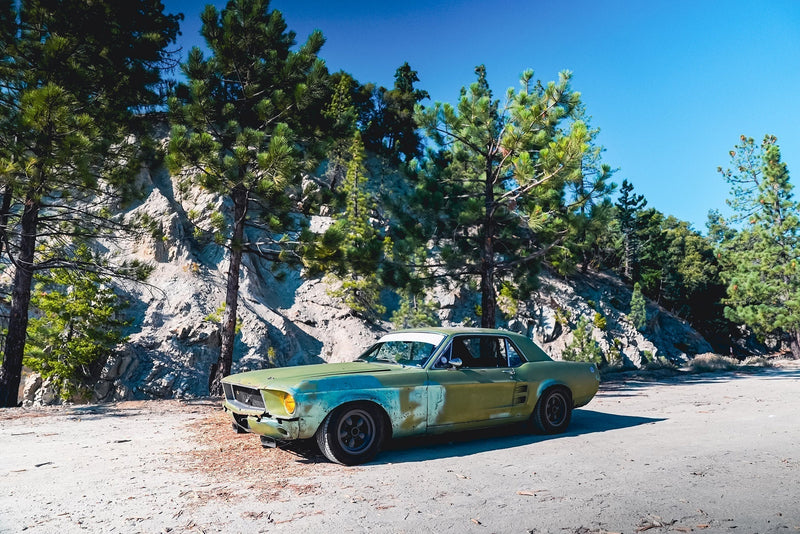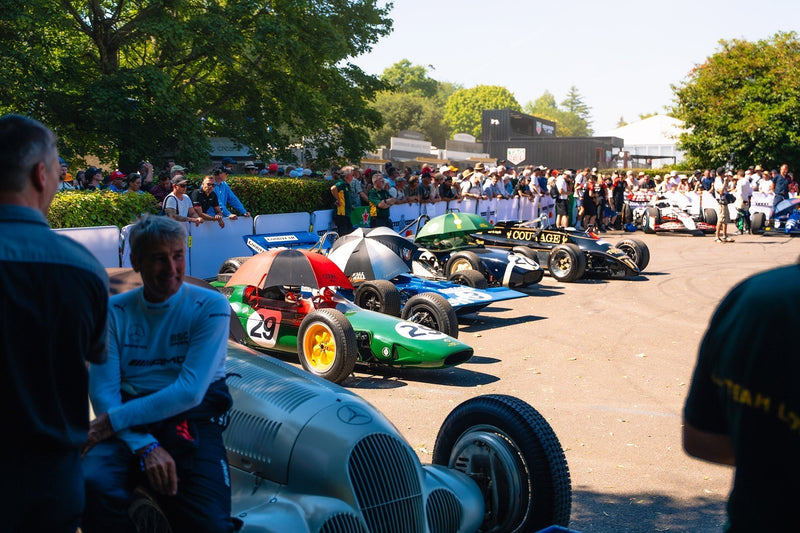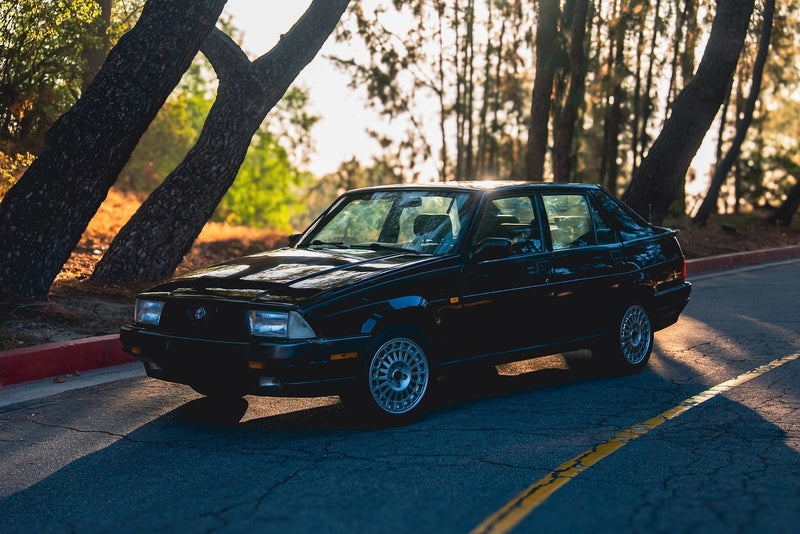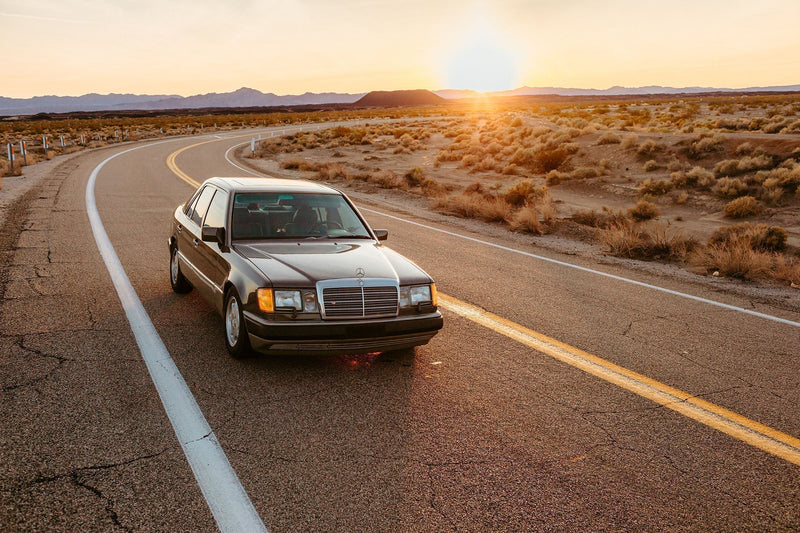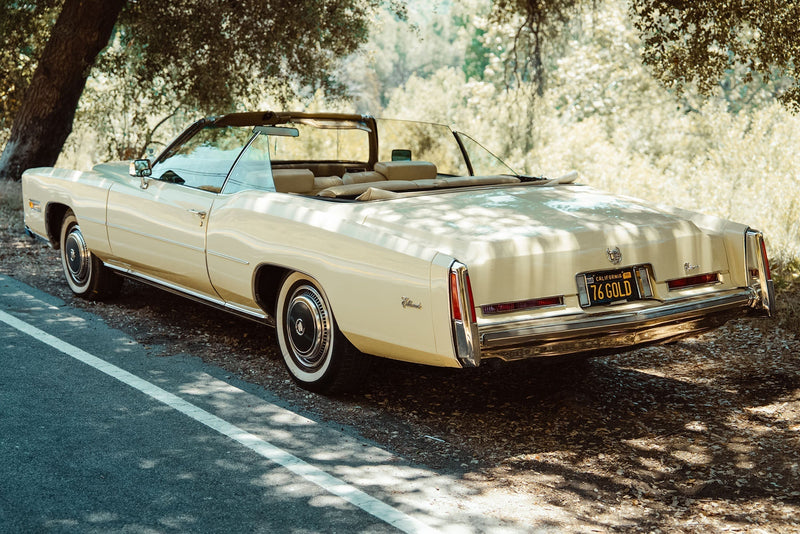
Too often, historically significant racecars are destroyed, lost, or simply misplaced—never to be found again. But occasionally, one is resurrected having been found in an unusual place, wearing an unrecognizable paint scheme masking their true identity. It’s these stories we all wish to be a part of and it’s a tale Dr. Bernie Martinez has been so fortunate to live.
Andrew Golseth: Dr. Martinez, how vintage racing become a part of your life?
Bernie Martinez: I was born in Argentina and grew up in the 50s and 60s. I met Juan Fangio when I was a little kid in 1955. Needless to say, I was a race fan and Alfa Romeo was a kind of a big name in Argentina in those days.
The GTA was brand new at the time and Carlos Lepro raced a GTA in the 1965 Grand Premio, which was the precursor race to the Rally Argentina. Lepro won the C-class in that GTA racing against the Fiats, the Peugeots, the Renaults, and Ford Cortinas. I was 19-years-old on the side of the road watching that race. At that time, nobody knew what a GTA was but I was impressed by Lepro’s little Alfa.
It caught my attention so I read about them and Alfa Romeo became very dear to me. 40 years later, I found that same car in North Carolina—Lepro’s old GTA racecar. I actually wrote a book on the car titledCarlos Lepro's Giulia: The First Winning GTA. That was the first confirmed GTA in America, arriving in September of 1965.


AG: That must have been spectacular to watch that first hand. The car photographed here, what’s the history with this GTA?
BM: This particular GTA won the Trans Am Championship in 1970 with driver Horst Kwech. Horst Kwech was an engineer. He had already won the Trans Am Championship in 1966 and his skills caught the attention of Carroll Shelby. So, he was hired to race for Shelby in 1968 and 1969.
By 1970, BMW was coming to win the Trans Am. Horst Kwech, sort of deceptively to Shelby, went back to the under 2.0-liter class and bought this GTA brand new out of the showroom in Chicago. Basically, he peeled the car off, totally dismantled it, and dipped the body likePenske did with the Camaros .
The car was dipped, lightened, and Kwech did a lot of little things to tweak the car. There was a strong rivalry between BMW and Alfa that year, plus all the Mini Coopers, Volvos, Fiats, and all the other little guys. Horst Kwech was very dominant that year.
This car got first place in Brainerd, Road America, and Watkins Glenn, finished second at Lime Rock, Briar, Mid Ohio, Bridgehampton, and Mont Tremblant, third place in Seattle and fourth place at Laguna Seca. So Horst Kwech did quite well considering BMW came with full support from the factory in Munich.
This car was a 1600cc and after the ’70 season, Horst Kwech moved into a 1750cc GTV, a steel bodied car but with a more powerful engine—because Datsun was coming, butthat’s another story .


AG: So, after its 1970 Trans Am victory, what happened to the car?
BM: Driver Lee Midgley had another GTA, #93, in which he finished second to Kwech in the 1970 Trans Am Championship. He used the ex-Kwech GTA, chassis #AR775460, to build a replica GTV that was the newest Alfa Giulia competing with the Datsuns in the 1971 Trans Am series. Midgley basically created a hybrid tubular Alfa GTV. This reconstruction—which included the conversion to a “smooth nose” GTV fascia—took place in 1971, although he didn’t race very successfully in the 1972 Trans Am series.
At the end of ‘72, Lee was invited to race in Mexico City at the Autódromo Hermanos Rodríguez where he drove and danced against the Porsches. Unfortunately, he got too tailed-out and went off course, destroying the bottom of the engine. After the race, Lee Midgley sold the car to a Mexican businessman and the car remained in Mexico until I found it.
AG: I understand your finding of the car was quite an adventure in itself. Tell me about how you located it.
BM: Well, I am actually writing a book about finding this car and it’s going to be titledThe Lost Mexican GTA . It’s an interesting story and was a real mission getting this car out of Mexico .
It started when I was showing the Lepro GTA, it had just won a very prestigious event at the 2004 Meadowbrook Concours, the contender to Pebble Beach back in the day. The Lepro car is beautiful. Roman Tucker—Mr. GTA in the United States and world renowned for his expertise in historical knowledge and exceptional restorations—and I restored the Lepro car. It took us four years to complete.
So, because we won our class, we were invited to the Meadowbrook Sunday display. Interestingly, on Sunday there was a young fellow by the name of Eliseo Carrillo, who I’ve become really good friends with since.
He was looking at the Lepro car, taking photos, and asked me if I was the owner. We got to talking in Spanish. He was arguing with me about a “smooth nose” GTA and I was telling him there was no such thing because the GTA (not the GTAm) cars were all “step front” or “step nose” early model Tipo 105 coupes.
He insisted on knowing of a “smooth nose” GTA in Mexico. I got his number and then called my friend Roman Tucker to discuss the car—we were wondering if it could possibly be Lee Midgley’s old racer, the “lost Mexican GTA.” Carrillo led Roman and me to the car in Mexico.
When we found the car, it was silver with GTAm over fenders with the Mexican flag down the middle of the body. The owner was Dr. Rodolfo Villalobos, who bought the car in 1988 and preserved it and vintage raced it in Mexico City and Puebla. At this point we didn’t know if it was the ex-Kwech racer or possibly Harry Theodoracopulos’s GTA.
Regardless, I decided to buy the car and then we had to figure out how to get the car out of Mexico. That… that was a very well orchestrated manoeuvre, getting the car back into the United States. I legally own the car, but it was a tricky situation. It took over six months to set the price and sale.
On the 5th of May 2005, we went off on our mission to get the car from Mexico. It wasn’t until September of 2005 at Watkins Glen when Horst Kwech confirmed that the car was indeed his old Trans Am racer—six monthsafter I had brought the GTA from Mexico City.
When I got the car back in the U.S. everyone was denying it was the real car. If you know Alfa Romeo guys, you know they can be… difficult. I’ll leave the full story for the book I’m writing.
AG: Being a GTA fan, I’ll have to check that out when it’s published. So, when you got the car it obviously didn’t look like it does now. Did you fully restore the car?
BM: It was the wrong color and had the later GTAm style widebody fenders, so Roman Tucker and I decided to restore the car back to the way Horst Kwech had the car set up when it won the 1970 Trans Am. After we had Horst Kwech verify this was indeed his old racecar, we began. Roman and I were able to complete the restoration in 24 months.
Thankfully, we were able to find authentic GTA aluminum skins. The front fenders and rear panels are all brand new NOS aluminum panels. Roman talked to Kwech and asked about all the little details. For instance, the engine was actually mounted a little further back than standard. Kwech was not a cheater, but the guy did some improvements to the car to help weight distribution. We did the car exactly the same.
The engine currently in it is a replica of the Trans Am engine because the original engine was damaged in Mexico. I have the original engine and it’s in the restoration process right now, so it will be numbers matching again.
Aesthetically, we did the decals, the livery, and the paint just as Horst Kwech had. We even added the little lips on the front fenders—that was added in the middle of the '70 season for aerodynamics. Kwech added the aero lips for Road America because he was most worried about the BMWs there. We also put the correct Trans Am rear fender arches, which were really typical in that era.
The roll cage is the original one, which we were able to verify based on an old picture Roman had. We also have the Trans Am medallion - it’s a little piece of metal riveted to the rollcage—we were lucky the cage still had the medallion from 1970 on it. That was a nice touch.
GTAs typically ran 14-inch wheels but Horst Kwech was a proponent of 15-inch wheels, which is why this car has a little more robust stance. The wheels and tires are fatter, compared to other GTAs of the era. With the 15s, it’s not as easy to drive—the car is more jealous, more crispy. You really have to be on it because it likes to get tail happy. With the 14s, it’s more predictable, but we went with 15s to be accurate.
AG: I love 15s on these, and the livery looks so lively compared to the typicalRosso finish. Did you immediately start racing the car after the restoration was complete?
BM: Yeah, pretty much. We unveiled the car at the Amelia Island Reunion in 2008. Since then we’ve raced it at COTA in 2013, 2014, and 2016. I’ve also done Watkins Glen, Mid Ohio, Waterford Hills, Detroit, and other tracks. I even had the car in the Alfa Romeo Chicago Nationals in 2008 and the Trans Am Reunion at Laguna Seca in 2010.
I might be 71-years-old, competing with guys half my age, but I got second at COTA two weeks ago. I got fourth in 2014, second in 2013. I’m feeling comfortable with the car but I’m on a budget so I only get to race the car two to three times a year. Roman and I have a great relationship. We have three racing cars together. We’ve developed a really great team.
It’s my passion to preserve cars like this. When you look at the story of Carlos Lepro, Horst Kwech at the same time in North America, and Dick Davenport, they were very skilful drivers with so much passion. Racing is a very expensive sport but they were smart to have other people put up the money for racing.



AG: That’s wonderful to hear you’re keeping the GTA on track where it belongs. To you, what makes racing the GTA so special?
BM: They have such an important history and I’ve been imbedded with these Alfas since 1965. I’ve been very fortunate to have found these cars. They were great cars even then, very aerodynamic for their time. They can be fragile and you have to maintain them, but they’re very simple.
The dynamics of racing is an art. Accelerating, braking, shifting, this car is very friendly in those respects. Horst Kwech, you’ve got to give credit to the guy, this GTA is not a very easy car to drive at the limit. The ex-Davenport GTA has a Corbeau seat but is otherwise an unmolested true Autodelta factory racecar that won the C-class 1971 Sedan SCCA championship—that car is more comfortable and easier to drive.
What’s my favorite thing about racing it? A little bit of everything, I suppose. They’re very light cars and powerful. The potency of the engine is there, the gearbox is excellent, the tiny little pedals are great, and the clutch is very light. You can’t have a lead foot; you need to dance with the pedals. The brakes are really good too.
It’s a legend of the marque. The balance. The maneuverability. You need to be gentle with the car, not harsh. The finesse is what brings this car’s character out. You’ve got to carry the momentum and that’s the beauty of this car.


AG: Driving the “saved from Mexico” Trans Am GTA, why does the history mean so much to you?
BS: There are people who haven’t given notice to the importance of the Alfa Romeo GTA. I think to notice the GTAs that competed and dominated the European Touring Car Championships is one thing. But the GTAs that raced in America are special. They’ve been modified in very rational ways. Like this car, it was modified to beat the BMWs, and it did.
The GTAs in America, when you put them all together, all the GTAs here, there’s 20? Maybe 25 in the U.S. and not all of them are even drivable and that’s sad. We’ve got to be proud of what these cars and drivers did here back in the day.















































